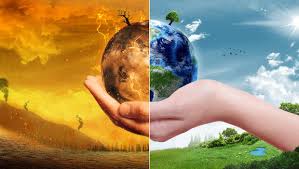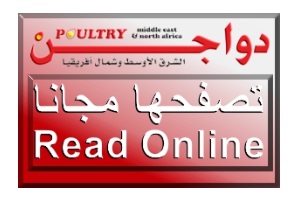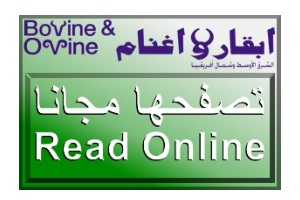 Earth Fever: Understanding and Addressing Global Warming
Earth Fever: Understanding and Addressing Global Warming
Our planet is suffering from a fever. This isn't a metaphor; it's a stark reality. Global warming, or climate change, refers to the long-term increase in the Earth's average temperature due to the enhanced greenhouse effect caused by human activities. Essentially, we're trapping more of the sun's heat within our atmosphere.
The implications of this warming trend are far-reaching and devastating
• Rising sea levels: Melting glaciers and thermal expansion of water are causing oceans to rise, threatening coastal communities and ecosystems.
• Extreme weather events: Increasing frequency and intensity of hurricanes, droughts, floods, and wildfires are disrupting lives and economies.
• Disturbed ecosystems: Changes in temperature and rainfall patterns are altering habitats, leading to species extinctions and biodiversity loss.
• Agricultural Disruptions: Shifts in weather patterns affect crop yields, threatening food security.
• Ocean Acidification: Increased ocean absorption of carbon dioxide makes them more acidic, harming marine life, especially coral reefs.
• Impacts on Human Health: Heat waves, air pollution, and the spread of infectious diseases have become more widespread.
Many Industries Contribute Significantly to Global Warming
• Fossil Fuel Industry: Burning coal, oil, and natural gas to produce energy is the largest source of greenhouse gas emissions, especially carbon dioxide.
• Transportation: Vehicles, aircraft, and ships release large amounts of carbon dioxide and other pollutants.
• Manufacturing: Industrial processes, including cement and steel production, generate significant emissions.
• Agriculture and Land Use: Deforestation, livestock farming, and fertilizer use contribute to greenhouse gas emissions, including methane and nitrogen dioxide.
Poultry and Dairy: Livestock Contribution
Yes, poultry and dairy farming contribute to global warming. How:
• Methane emissions: Livestock, especially cattle, release methane, a potent greenhouse gas, through their digestive processes (enteric fermentation).
• Nitrogen dioxide emissions: Manure and fertilizers are used to release nitrogen dioxide.
• Deforestation: Pasture expansion and feed production often lead to deforestation, which releases stored carbon.
• Feed production: Growing crops for animal feed requires energy and resources, contributing to emissions.
Industries that contribute to global warming are also vulnerable to its effects
• Heat stress: Extreme heat can reduce livestock productivity and increase mortality.
• Feed availability: Drought and flooding can disrupt crop yields, affecting feed availability and prices. • Disease Outbreaks: Climate change can create favorable conditions for disease vectors, increasing the risk of disease outbreaks.
• Water Scarcity: Water is essential for livestock and poultry farming, and climate change is exacerbating water scarcity in many regions.
Preventing catastrophic climate change requires a concerted global effort.
• Transition to Renewable Energy: Switching from fossil fuels to solar, wind, and other renewable energy sources is critical.
• Energy Efficiency: Reducing energy consumption through improved technologies and practices.
• Sustainable Transportation: Promoting electric vehicles, public transportation, and alternative fuels.
• Sustainable Agriculture: Adopting practices that reduce emissions, such as precision agriculture, improving compost management, and reducing deforestation.
• Carbon Capture and Storage: Developing technologies to capture and store carbon dioxide emissions.
• Reforestation and Afforestation: Planting trees to absorb carbon dioxide.
Even though food security industries are vital, poultry and dairy must adopt sustainable practices
• Improved manure management: Implementing technologies to reduce methane and nitrous oxide emissions from manure.
• Feed optimization: Improving feed efficiency to reduce the amount of feed required per unit of product.
• Precision livestock farming: Using technology to improve animal health and productivity and reduce resource use.
• Adoption of renewable energy: Using solar and wind power in agricultural operations.
• Sustainable sourcing: Obtaining feed from sustainable suppliers.
Stakeholder responsibilities
• Broiler integrators and large-scale layer farmers: Invest in and implement sustainable practices, improve manure management, and improve feed conversion ratios. They should also explore renewable energy sources for agricultural operations.
• Dairy procurement companies: Encourage and support sustainable practices among dairy farmers, invest in methane reduction technologies, and promote sustainable feed sources. They should also focus on efficient transportation and processing.
• Poultry and livestock feed manufacturers: These companies must focus on sustainable ingredient sourcing, waste reduction, and exploring alternative feed ingredients that reduce environmental impact.
The challenge is enormous, but it is not impossible. By embracing innovation, collaboration, and a commitment to sustainability, we can mitigate the effects of global warming and build a more resilient and sustainable future for all.
Source: avinews.com/ar/


















